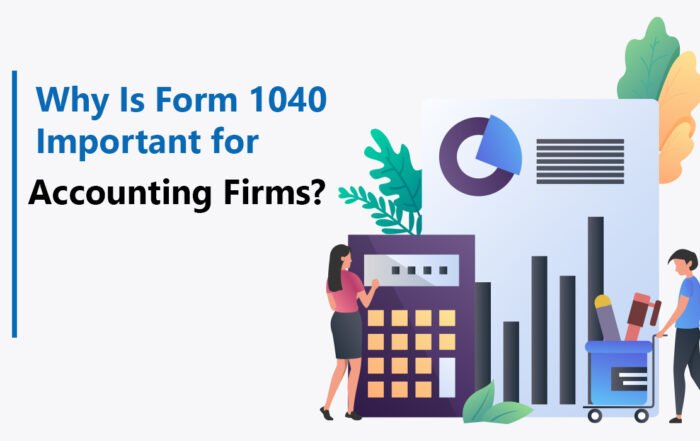In today’s fast-paced business world, managing payroll can be a complicated task. From calculating salaries to ensuring tax compliance, there’s a lot to keep track of. One crucial aspect of payroll management that businesses often overlook is payroll reconciliation. Understanding what payroll reconciliation is and why it is so important can help accounting and finance company avoid costly mistakes, ensure compliance, and improve overall financial health. This blog will explain what payroll reconciliation is, how to do it, and why every business – big or small – must not overlook it.
What is meant by Payroll Reconciliation?
Payroll Reconciliation separation involves comparing the payroll records with the total record of the company. In other words, it is simply a mechanism in which payroll companies combined with HR departments and accounting departments analyze payroll data and equate it to a company’s financial statements. This means that businesses must properly record pay structures such as wages, taxes, benefits, deductions, and employer contributions.
The payroll reconciliation process finds differences between the payroll reports and general ledger, tax records, as well as bank statements. The objective is to ensure that the amount of money paid to employees matches the records in accounting, tax declarations, and other documents used when preparing the payroll.
What Is the Importance of Payroll Reconciliation?
Indeed, payroll reconciliation is not just advisable; it is a sanity measure in running a business organization. Here are some reasons why payroll reconciliation is important:
1. Accuracy of Payroll Records
Salary as a cost factor constitutes a substantial cost account in many organizations. Calculating and paying employees is a serious business that has consequences for employees and employers. Payroll reconciliation also helps in checking whether documents tally with figures of financial statements so that no mistake occurs regarding payment to employees, taxes, and other expenses.
2. Compliance with Tax Regulations
This article presents one of the most compelling reasons why payroll reconciliation is crucial, and one of them is compliance with tax laws. Employer payroll services such as income tax, social security, Medicare, and other deductions belong to the duties of payroll companies.
Failure to file taxes or where tax filings and payments made to the tax authorities are inaccurate then the law provides for penalties and interest charges to be imposed. One of the benefits of payroll reconciliation is to guarantee that every tax-related deduction is proper and timely.
3. Employee Satisfaction and Trust
Accurate payroll processing is essential for employee satisfaction. When employees are paid incorrectly or on time, it can lead to frustration, lack of trust, and even legal action. Payroll reconciliation ensures that employees are paid the right amount at the right time, fostering a positive relationship between the company and its workforce.
4. Financial Transparency
Financial transparency is a critical component of the regime in every business organization. Through the agreement process, payroll records are correlated to the general ledger which helps in giving a correct position of the business. Both business owners, CFOs, and accounting teams get to determine how payroll expenses are being expended through payroll reconciliation.
5. Audit Readiness
The data required during an audit includes financial statements and payroll records of your business. Reconciliation also points out that the data on the payroll should make sense with the financial statements and, if necessary, can be traced to their source. This makes the auditing process so much easier and there are few or no complications or penalties arising in this case.
Payroll Reconciliation Process.
The process of payroll reconciliation is normally as described below. Here’s an overview of what it entails:
1. Collect Payroll Data
The first step in relation to payroll reconciliation is sourcing all paperwork relating to payroll. It comprises the wages and salaries of the employees, other employee benefits, related tax credits, bonuses, and any other matter connected with the remuneration of employees. Payroll data is normally produced by employing payroll software, using MS Excel, or hiring a third-party Payroll Outsourcing.
2. Check Bank Statements
Once the payroll data is captured, the next step is to verify the bank statements to confirm that the payments have been made correctly. This involves ensuring that the employee payments are accurate, including deductions, and that the payroll taxes match the bank transfers.
3. Compare to Financial Records
After scrutinizing the bank payments or receipts, the companies should cross-check the payroll data with the general ledger and financial report. There should be correctness in the amount presented under the payroll expenses in the ledger and any irregularities in the amount presented under the employees’ payroll should be corrected.
4. Verify Tax Filings
The next step in payroll reconciliation is ensuring that the tax deductions and contributions are accurate and properly filed. This includes verifying that the correct amount of tax has been deducted from employee salaries and that the employer’s share of taxes, such as Social Security and Medicare contributions, has been paid.
5. Identify and Correct Discrepancies
Any differences that may occur during the reconciliation process must be settled right on the spot. This could include mistakes on the payroll, a change of tax report, or even a problem with the bank statement. This must be done swiftly in any given business in order to avert any legal or financial troubles.
6. Finalize Payroll Reports
After all the above differences have been reconciled, there is a payroll report that should be prepared. Others include creating payroll summaries and tax filing that tally with the reconciled data. These reports should be kept safely and be accessible at any other time or in the process of audits.
Problems In Payroll Reconciliation
Payroll reconciliation is very important, as mentioned above, but like all things, it has its drawbacks. Here are some common obstacles businesses face when performing payroll reconciliation:
1. Some intricacies in making calculations of payrolls
Payroll reconciliation is also a time-consuming and complicated process, especially for businesses that have a structured payroll system which may include pay grades, bonuses, benefits, and taxes among others. Common mistakes involved in these calculations include; therefore, the payroll reconciliation process is even more complicated.
2. Manual Errors
To this date, most organizations are nonetheless using traditional approaches and notebook data in their payroll calculations and reconciliation. This amplifies the chance of human error, which results in wrong records in payroll and hence affects the payroll reconciliation.
3. New tax laws and regulations
Legal provisions relating to taxation always change, and it is always important that people update themselves regarding the new provisions in force. Incorrect calculations for tax deductions, filing of taxes, or failure to file within the right time also attract some penalties. This can make payroll reconciliation even more difficult for the company, particularly for those firms that centralize the management of payroll.
4. Time-Consuming Process
Payroll reconciliation for a company may be a tiresome undertaking especially where companies do not hire personnel to specialize in payroll processing. However, the necessity of carrying out these reconciliations far outweighs the time it takes, making them mandatory for any business.
How Payroll Outsourcing Can Help
Many businesses choose to outsource payroll processing to payroll companies or payroll outsourcing services to avoid the hassle of managing payroll internally. Outsourcing payroll offers several benefits, such as:
1. Expertise and Accuracy
Payroll outsourcing service providers have professionals to handle the services of payroll preparation and validation. With preventive knowledge of the legal demystified presumptions of payroll and taxation, these professionals are fully aware of the correct method and protocol for processing payrolls.
2. Time Savings
Outsourcing this kind of work enables the business organization to have more time to concentrate on production, business development, customer service, and sales. Outsourced payroll firms are responsible for managing payroll computations as well as check runs and the reconciliation and tax remitting processes.
3. Compliance and Risk Reduction
Outsourcing of payroll services means that firms update themselves with the new policies on taxation thereby minimizing cases of violation. Outsourcing in turn helps organizations remain certain that their payroll processing is flexible with the current legal provisions to avert penalties and legal complications.
4. Cost-Effective Solution
Many business people agree that outsourcing of the payroll processing services can be much cheaper than doing it within an organization. Payroll companies are cheaper for their services because companies do not have to employ dedicated payroll staff.
Why Lints Advisors for Payroll Reconciliation?
Here at Lints Advisors, we fully understand the dynamics of Payroll processing and the need to rest assured of a good reconciliation. The author and their team of experts focus on delivering efficient and correct payroll services in an organization. For your payroll needs you can outsource, get the services of a company that processes payroll, or even get services for payroll reconciliation and more from Lints Advisors.
Don’t let payroll discrepancies or tax issues slow down your business. Let Lints Advisors handle your payroll needs, so you can focus on what truly matters – growing your business. Contact Lints Advisors today to learn more about our payroll processing service and how we can help you maintain accurate, compliant, and efficient payroll systems.
Financial Sector Trends: What the 2025-26 Budget Reveals
The Union Budget 2025-26, unveiled by Finance Minister Nirmala Sitharaman, has set the stage for transformative changes in India's financial sector. The upcoming budget concentrates on developing economic expansion while making credit options more accessible [...]
Empowering Women: Financial Planning for 2025
In today's dynamic financial world, empowering women through tailored financial planning is more crucial than ever. Women often face unique financial challenges, including longer life expectancies, career breaks for caregiving, and persistent wage gaps. Addressing [...]
Why Is Form 1040 Important for Accounting Firms?
When it comes to the world of taxes, Form 1040 holds a central position. It is often referred to as the "U.S. Individual Income Tax Return" and serves as the primary document taxpayers use to [...]





